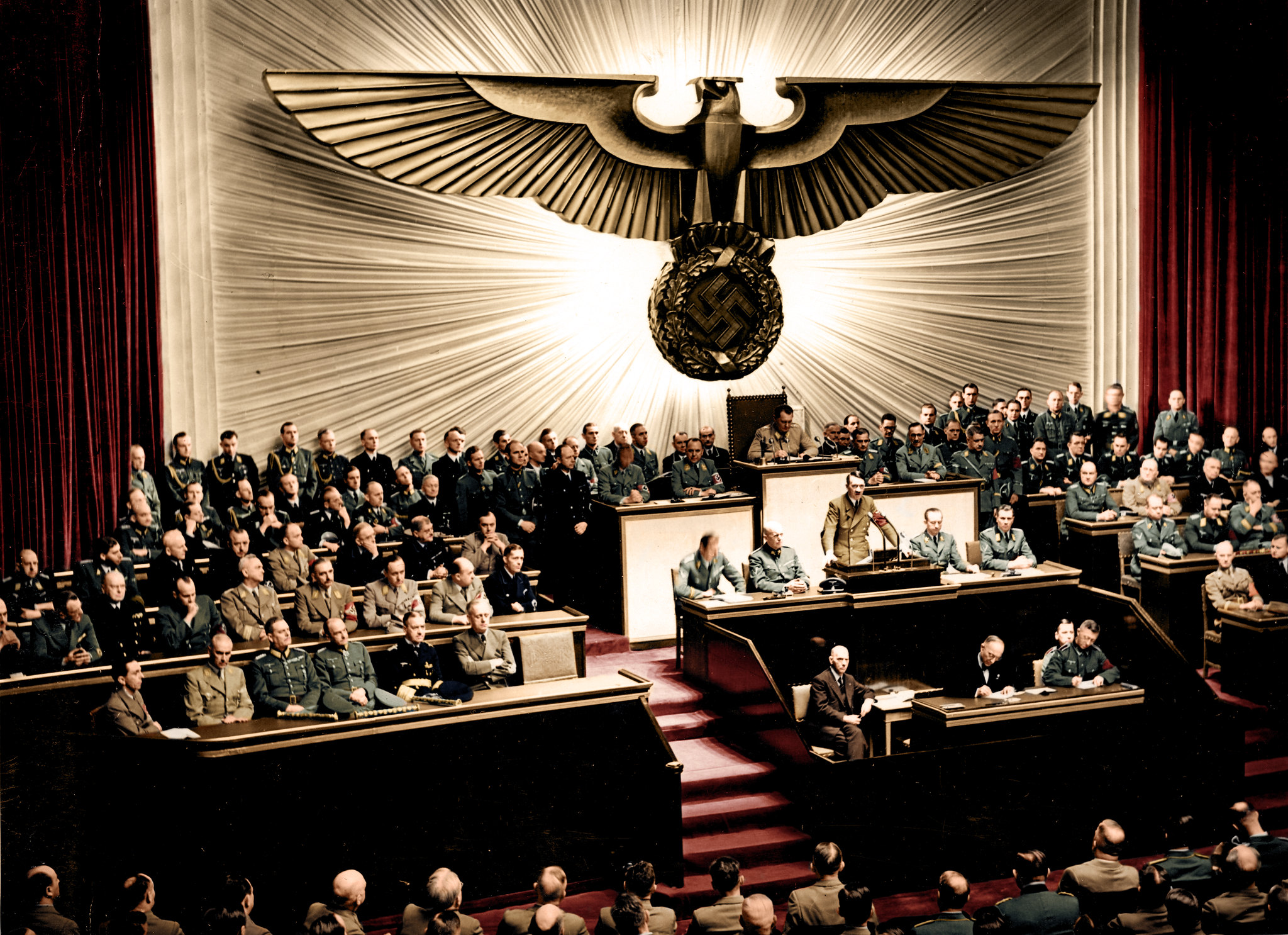In Nazi Germany there were countless forms of propaganda and
imagery used to mislead people. Some common examples that come to mind are propaganda
posters or speeches by Hitler, but there are others that were less obvious. These are the most dangerous types because it is more likely to influence people without them realizing it.
One
of these was the interior design used by the dictator to both gain trust, and
convey power. Hitler’s personal interior designer Gerdy Troost who decorated
his homes and personal offices. Several examples of her work include interiors
of the Old Chancellery in Berlin, his Munich apartment and his mountain retreat
on the Obersalzberg. The early work done by Troost was used to present Hitler
as a German gentleman who enjoyed simple but elegant design. This effort was
very effective and drew attention from many, including foreigners. In 1939
Hitler was featured in The New York Times with an article titled “Herr Hitler:
At Home in the Clouds”. This article portrayed Hitler as a cheerful man in a mountain
home that enjoyed playing with his dogs. These articles weren’t an uncommon
sight in international media. People wanted to know more about the German
politician who was gaining popularity, and an elegantly decorated mountain retreat
was the perfect place to sell an image. The
most impressive part about this news coverage is that Hitler was getting other
people to voluntary spread his propaganda. Other than media Hitler would host
meetings with foreign leaders using his homes to appear powerful. During meetings
with the press or foreign leaders the guides of tours would always point out
the various German made parts of the decor to show flaunt German craftsmanship.
Once
the war began the design preferences of Hitler and the Nazi party changed.
Instead of trying to appear luxurious the focus was on presenting a strong and
powerful message. The use of imagery like eagles and skulls is an obvious
example of this. One image that also shows this is the picture of Hitler
declaring war on the United States.
I don’t think I need to explain the power
conveyed by a giant metal eagle spreading its wings while clutching the symbol
of Nazi Germany.
The
use of propaganda in Nazi Germany was widespread and very powerful. While some
types of misleading messages are upfront and somewhat obvious there are many
others that try to fly under the radar. It is important to remember that
influence won’t always be an obvious thing.
Sources:
- http://www.stuff.co.nz/life-style/home-property/72463886/How-Hitlers-propaganda-machine-used-interior-design-to-aid-his-rise-to-power
- http://www.curbed.com/2015/9/3/9924394/hitler-at-home-interior-design

No comments:
Post a Comment